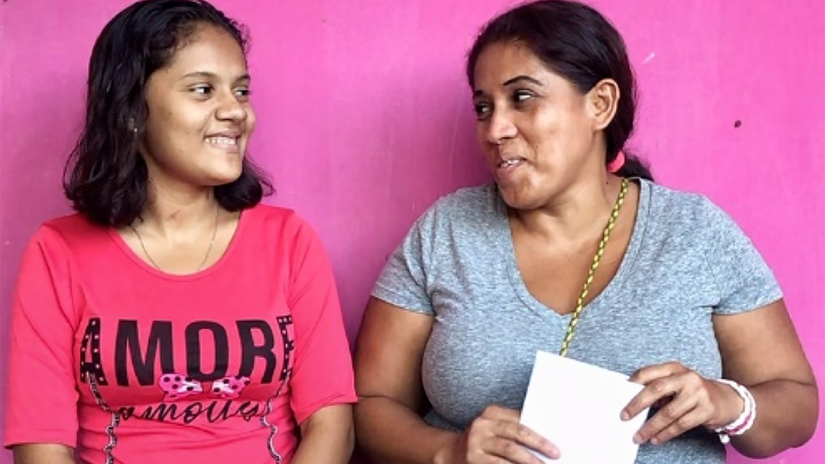In the courtyard of a health centre in Managua, Nicaragua, a mother and daughter share a supportive smile. Their expressions convey joy and confidence. They have just shared with us a story of survival and empowerment. Having had a very hard personal experience with dengue fever, both are now community volunteers in a Nicaraguan Red Cross vector control operation.
In 2019, the Central American region suffered the most extensive dengue epidemic of the decade. More than one million people have been affected by the outbreak, with the highest numbers of cases reported in Honduras and Nicaragua. The Red Cross is working in these two countries, as well as in Costa Rica, El Salvador and Guatemala, to empower local communities to cope with both the current crisis and possible future outbreaks.
With the support of the International Federation of the Red Cross and Red Crescent (IFRC), National Societies are working alongside communities in the most affected areas to equip them with the information and materials necessary to control and mitigate the effects of the current outbreak, and prevent future ones. This community-based approach is known as Community-Based Epidemiological Surveillance (CBES), and has been used in the region before with positive results in other epidemic crises, such as zika in 2016. This strategy allows community members themselves to identify risks in their environment and take action to eliminate or mitigate them, empowering them to become active agents of change.
The first step of CBES is to identify social leaders who, working together with National Societies, organize community groups. Once these groups are formed, the Red Cross provides them with information on the outbreak so that they can identify warning signs and know what referral routes to health care are available if a potential dengue case is identified, as well as what hygiene and sanitation measures should be taken to prevent and mitigate outbreaks. Based on this information, communities create risk maps and plans to implement preventive and mitigation measures. The final step of CBES is the implementation of these plans through breeding site identification and elimination campaigns, home visits in which they replicate the information learned about dengue prevention, and outreach activities in schools.
A life-changing disease
At a recent activity with community volunteers in Managua, Karen Rodriguez, a Nicaraguan Red Cross volunteer, shared her experience with dengue fever. Her daughter, Jade Gámez, had suffered from dengue three times, at the age of 11, 12 and 13. The last of those times, Jade had been diagnosed with severe dengue, and the girl suffered kidney and liver damage as well as a preinfarction.
Children under the age of 15 are a particularly vulnerable group. In August 2019, 66% of the deaths reported in Honduras as part of the current outbreak were under 15 years of age, and in Guatemala, 52% of the severe dengue cases reported were also in this age group.
Having survived such a serious illness, mother and daughter are now volunteers with the Nicaraguan Red Cross. As part of the current operation, their work consists on replicating the information received among their neighbors, as well as carrying out clean-up campaigns to eliminate breeding grounds in their community. "We both do the same thing - when one can't go to the clean-up activities, the other one goes," says Karen. For them, this is an opportunity to help their neighbors avoid going through the same experience they went through years ago. "Now that I am supporting the Red Cross and I can help people, I feel calm, I feel happy," says Karen. "More than anything, so that people don’t go through the same experience I went through," adds Jade.
Dengue fever outbreaks are cyclical and peaks occur around the world every year during rainy seasons, with extensive epidemics occurring at a frequency of every four to five years. In 2019, the World Health Organization recognized dengue as one of the top ten threats to global health, with an estimated 40% of the world’s population currently at risk. Epidemics can have a devastating effect on the most vulnerable groups, such as children. That is why it is important for National Societies to work on advocacy and capacity building to continue to empower communities in preparing for and responding to dengue and other vector-borne diseases such as zika and chikungunya.
Article
World Immunization Week: Afghan Red Crescent mobile health teams bring life-saving immunization and care to people in remote areas
World Immunization Week: Afghan Red Crescent mobile health teams bring life-saving immunization and care to people in remote areas
| Article

